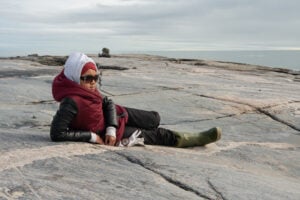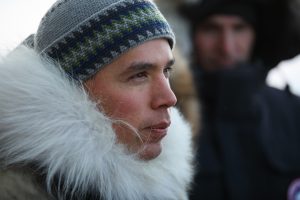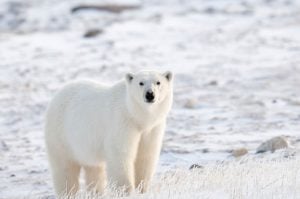Walrus meat — cooked, raw or fermented in cool dry Arctic gravel to make <i>igunaq</i>, which tastes something like blue cheese — is among the local foods enjoyed in many of Canada’s Inuit communities. Like pork though, walrus can occasionally carry the Trichinella parasite. If not cooked thoroughly, infected meat can bring on Trichinellosis, a disease that causes swelling, muscle pain and fever, and chronic gastro-intestinal troubles.
Trichinella is a tiny nematode that’s impossible to spot with the naked eye. But thanks to the Nunavik Trichinellosis Prevention Program, lovers of raw walrus meat and <i>igunaq</i> from across Arctic Quebec can enjoy the traditional food with full confidence that it’s safe to eat.
The screening program, which has been operating for more than 20 years out of the Inuit-owned Nunavik Research Centre in Kuujjuaq, Quebec, works with hunters to screen walrus meat for Trichinella. The process is simple and efficient. After butchering a walrus, the hunter removes the tongue, packages it using a sampling kit the centre provides, and puts it on the next flight to Kuujjuaq. The hunter then tags all pieces of the meat so they can be identified with that particular animal, and sets them aside. Until the test results arrive, the meat can only be eaten if it is well cooked.
Once in Kuujjuaq the sample goes to the research centre where a parasitologist uses a protocol developed with the Canadian Food Inspection Agency to test it for Trichinella. The results are sent back to the community within 24 hours. If it’s free of the parasites — as is most often the case — the meat may safely be eaten raw or made into <i>igunaq</i>. If it’s infected, it must only be eaten if well cooked and cannot be consumed raw, even by dogs.
“It’s a very successful program”, says Barrie Ford, a wildlife biologist at the centre and a lifelong resident of Kuujjuaq. “It’s easy to use and it gets results. In the 1980s there were walrus-linked Trichinellosis outbreaks every other year or so in Nunavik, but those are a thing of the past now. It’s a great example of community-based science that serves local needs.”
This is the latest in a continuing blog series on polar issues and research presented by
Canadian Geographic in partnership with the Canadian Polar Commission. The polar blog will appear online every two weeks, and select blog posts will be featured in upcoming issues. For more information on the Canadian Polar Commission, visit
polarcom.gc.ca.






